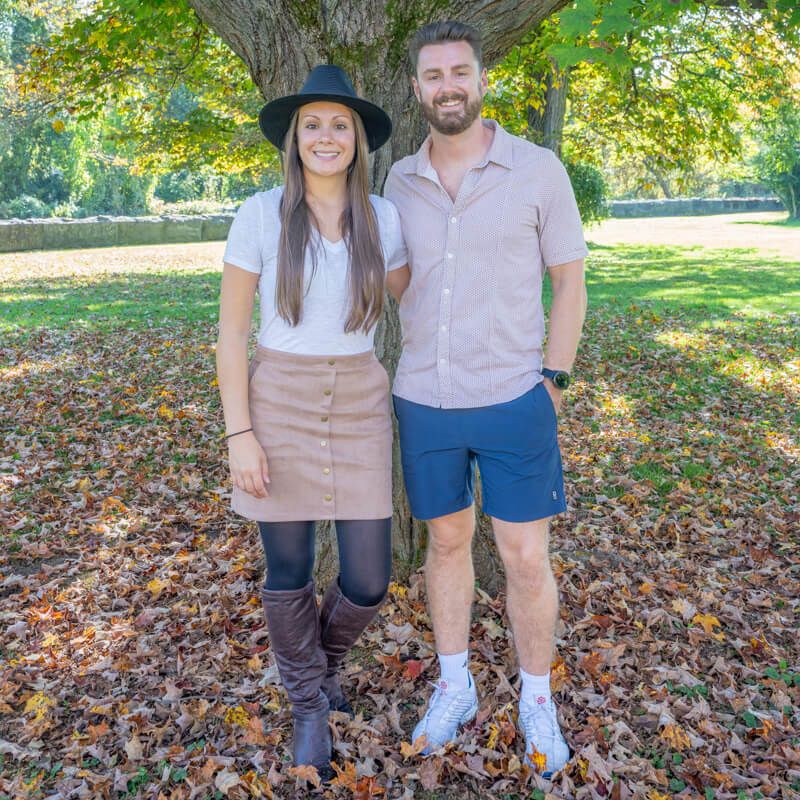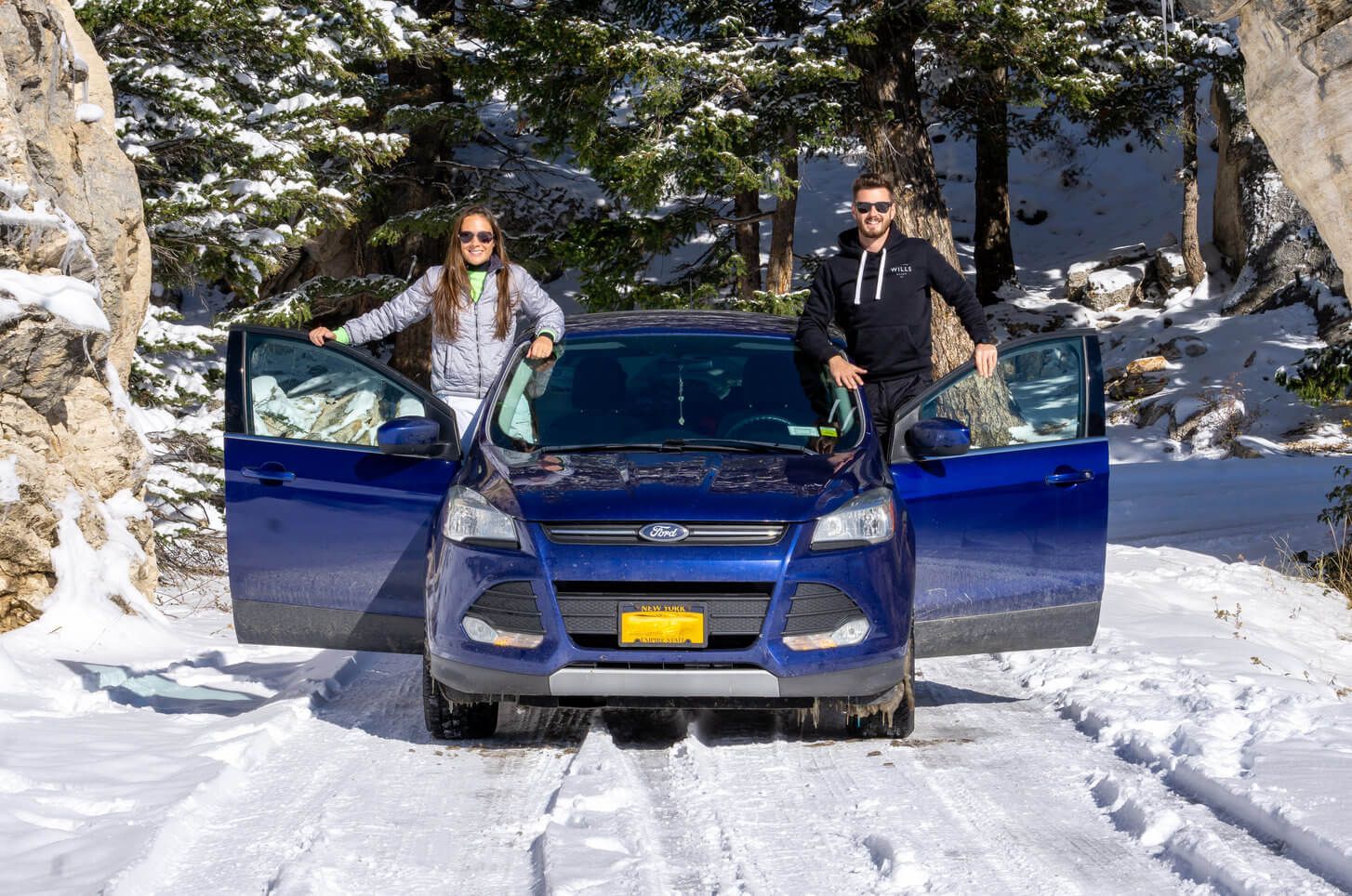Road trips are one of our favorite ways to travel and explore new places. We love driving long stretches of the open road listening to epic playlists and feeling the wind in our hair. Over the years we’ve driven some of the best road trips in the United States, including looping around the entire country twice. We’ve spent a big chunk of our married lives cruising around in our SUV, so we’ve learned a thing or two about how to pack for a road trip.
In this guide we show you our extensive road trip packing list which includes everything you’ll need to plan the perfect adventure. The day can take quite a turn if you haven’t prepared properly so we want to help you have a safe, comfortable and memorable trip. And don’t forget to subscribe to our blog for a free printable travel packing list, plus several other freebies!
Pre-Trip Planning
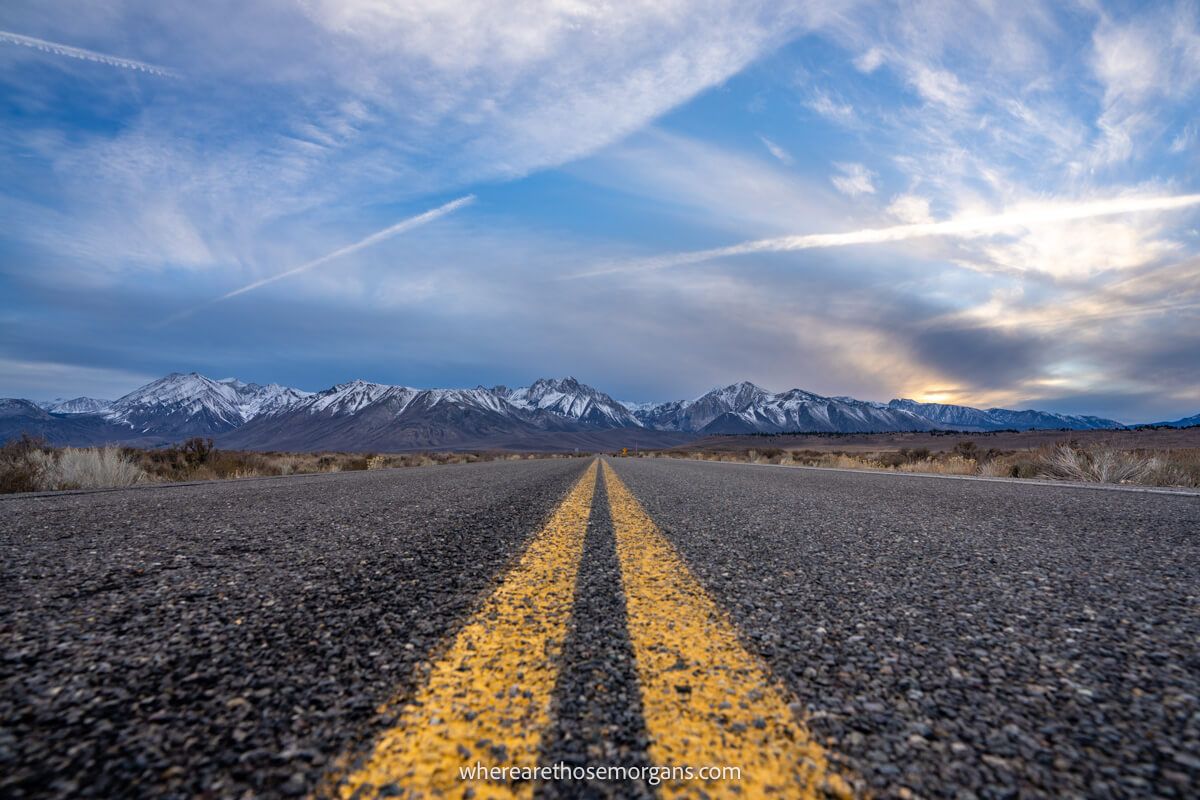
Before hitting the open road, it’s important to get your vehicle ready for the trip, especially if it has given you any problems in the past. We always bring our SUV to a mechanic for a pre-trip check. This includes an inspection on the brakes, belts and hoses, looking for looseness in the steering and suspension, and checking for any leaks.
Since we’ve lived all over the US, we’ve brought our car to various mechanics but a pre-trip inspection has typically cost us about $100-200. It’s a good way to make sure your car has no major problems before you set off. The last thing you want is to break down right in the beginning of your trip or in a remote and hostile location where you’ll be stranded.
Here are a few quick maintenance items you can check at home:
- Oil change – Make note of when you’ll need the next oil change.
- Windshield – Inspect your wipers and replace if necessary then top off the washer fluid.
- Examine the tires – Review the recommend tire pressure and check your current tire tread depth.
- Working lights – Ensure all the lights work in both the front and back of the car.
Last but not least, give your car a good clean before your trip. Take out anything you won’t need, vacuum the interior, scrub the plastic surfaces, organize the glove box and clean all the windows.
It’s so much easier to keep the car clean if it starts out that way and you’ll be much more comfortable throughout your journey. After reading this road trip packing guide, you might want to read our guide on how to plan a road trip next.
Road Trip Basics

The first thing you should think about packing are the basic road trip essentials. These are items you should always have in your vehicle even if you’re not on a road trip.
- Driver’s license, proof of insurance and vehicle registration – It’s good practice to keep all 3 items in a secure easily accessible location. If you’re traveling abroad, you’ll also need a passport and maybe an international driver’s license depending on the country.
- Travel or health insurance – Always know where to find your policy in case of a car accident.
- Car manual – Older vehicles will often have a hard paper copy, but in newer models the manuals are often built into the screens on the dashboard. Just know where to locate the manual if necessary.
- First aid and road side emergency kits – We’ll cover the specifics in detail and help you figure out exactly what to bring.
- Credit/debit cards, cash and coins – Road trips often include drives through remote areas without basic amenities so it’s smart to have multiple ways to pay especially when going through tolls.
- Light source – If your vehicle breaks down at night, a headlamp or flashlight will light the way. Do not rely on just your phone.
It can be overwhelming to think about all the items you need to bring with you in case of a break down. But start with this emergency road side kit and tailor it to your needs. Or you can DIY your own kit with items you have laying around the house.
Here’s what we always take for a roadside emergency:
- Jumper cables
- Emergency roadside flares
- 12v tire pump and fix-a-flat
- Duct tape and electrical tape
- Spare tire
- Tire pressure gauge
- Bungee cords
- Tow strap
- Rope
- Coolant
- Wiper fluid
- Portable gas container
- Manual car jack
- Ratchet straps
- Seat belt cutter
- Window breaker
- Reflective vest
- Work gloves
- Emergency rain poncho
- Warning triangle
- Whistle
- Basic tools (lug or torque wrench, screwdrivers, mallet, cutting pliers)
- Extra car key (store somewhere safe)
Another device we recently learned about was the Fix’d device. This is a cheap item you can keep in your car which will help you diagnose any potential issues. The device plugs into the onboard diagnostic port and if the check engine light goes on, all you have to do is plug it in. After the device runs its program, you’ll receive diagnostic codes so you can assess whether or not you need to get to a mechanic right away.
Travel Tip: Check your vehicle to see if a jack and lug wrench are stored underneath your spare tire. You should also brush up on how to change a spare tire.
First Aid Essentials
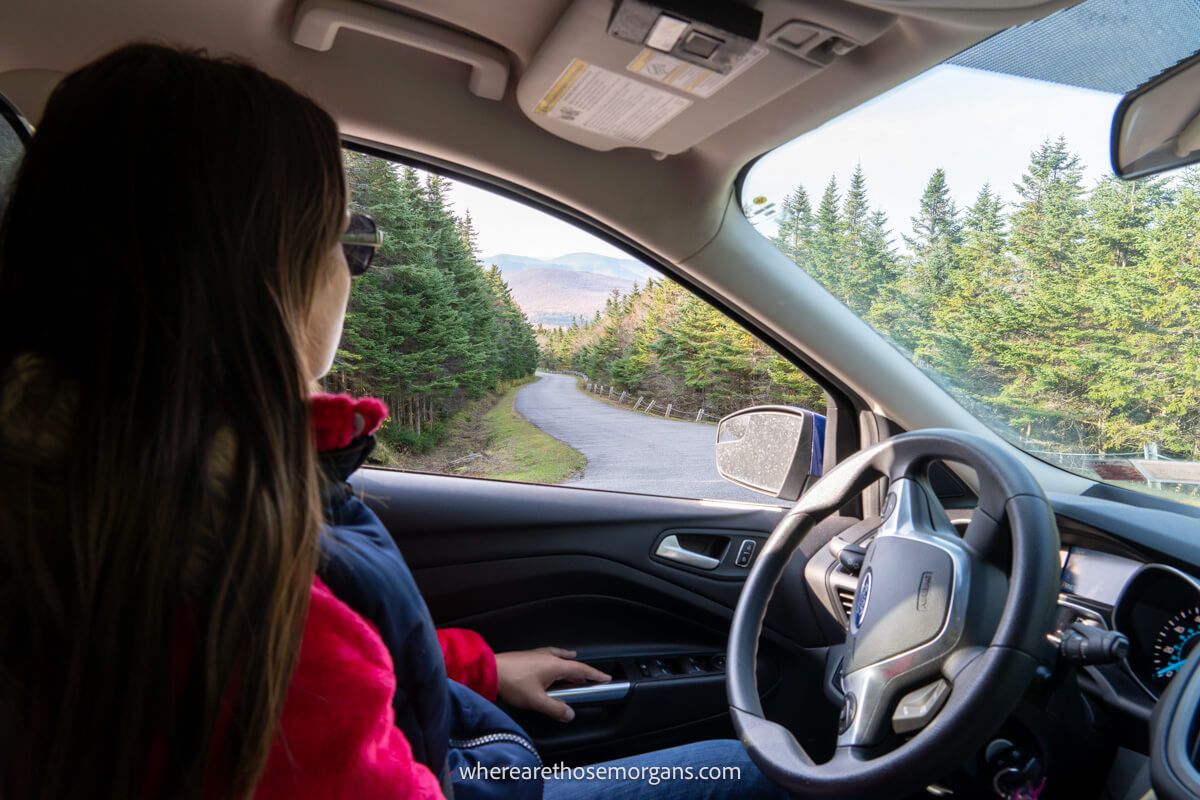
A standard first aid kit comes with many items to prepare you for a potential emergency. We bought this one and added more items to cover us for a variety of injuries.
Here’s what you should have in a first aid kit:
- Bandages and gauze
- Tourniquet
- Bug spray
- Reef safe sunscreen
- Band-aids
- Moleskin
- Antibiotic ointment
- Hand sanitizer
- Tick remover
- Toilet paper
- Paper towels
- Kleenex
- Alcohol wipes
- Gloves and PPE
- Biodegradable body wipes
- Emergency blanket
- CPR Mask
- LifeStraw
In addition to any prescription medications, you should also bring some over the counter medications. We learned this the hard way when Kristen got stung by a bee and her leg swelled up while we were hiking in Shenandoah National Park. Luckily, we weren’t too far from the visitor center and they had antihistamines.
- Ibuprofen (anti-inflammatory)
- Acetaminophen (headaches)
- Anti-diarrhea and laxatives
- Antihistamines
- Calamine lotion
- Aloe vera gel
- Emergen-C
- Cough and cold medications
- Car or motion sickness patches
- Any prescriptions
Pick and choose from the medications above for your specific needs. It’s a good idea to prepare for any common sickness that might occur during your road trip so everyone stays healthy and comfortable.
How To Get From Point A To Point B
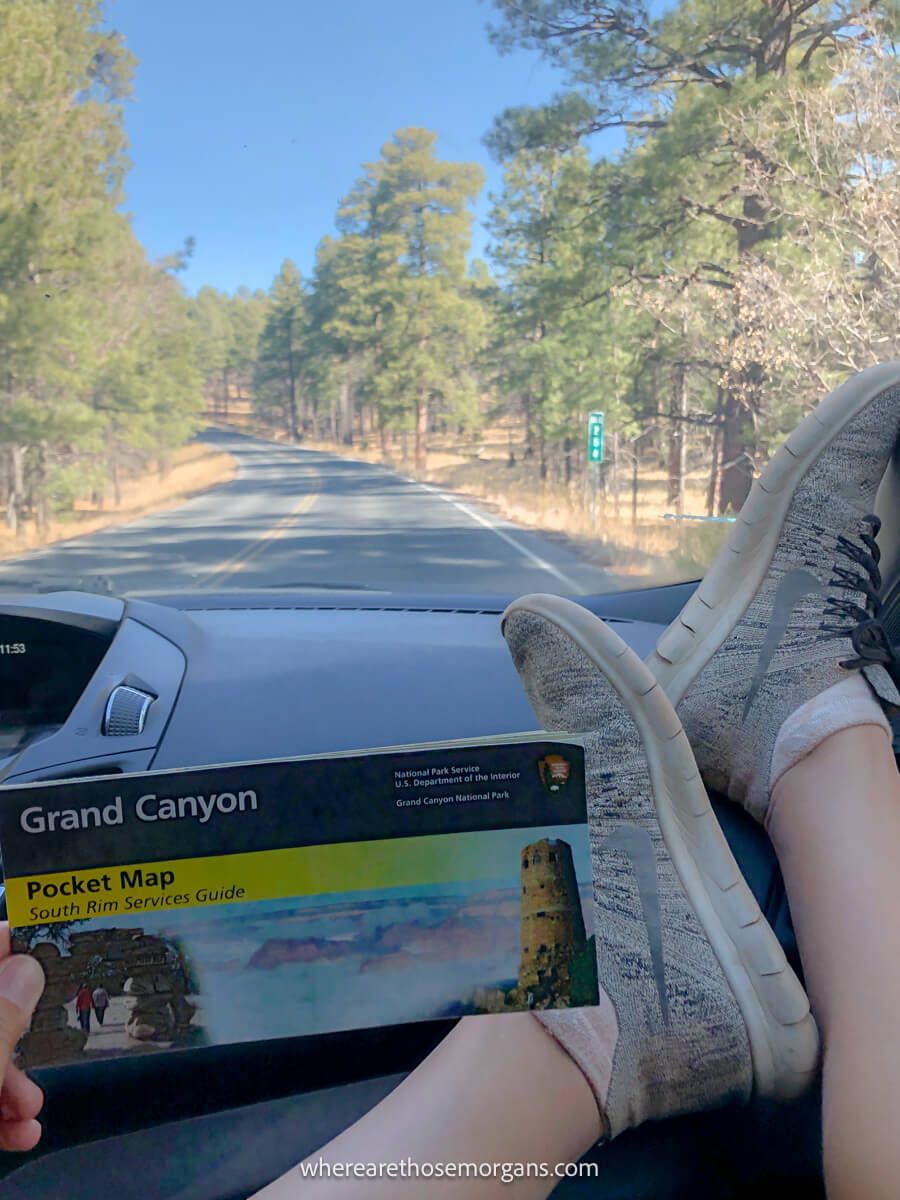
You can’t get where you’re going unless you know how to get there. Today, most travelers use their cell phone to navigate during a road trip. But it’s important to have a basic understanding of where you’ll be driving and have a plan in case you lose service.
Keep in mind, many rural places across the US do not have cell coverage so it’s not really a case of if you lose service, but when. This is where it pays to plan ahead. If you lose signal, you can use offline maps or get out that trusty paper map you almost left at home. The same goes if you’re traveling abroad, we always recommend carrying both a paper map and an electronic map that provides turn by turn directions.
- Navigational maps – Most drivers on the road will use an app such as Waze or Google Maps for directions, but do not use this as your sole source for navigation.
- Paper maps or road atlas – These are essential in case you find yourself lost in an area with no service. We like Benchmark Maps, National Geographic Maps and road atlases by Rand McNally. If you’re a AAA member, you can order or pick up paper maps for free at most locations.
- Offline maps – This type of map can be used without cell service or WiFi as long as you have previously downloaded the map to use offline. You can create a route for turn by turn directions when you hit a dead patch of service. Maps.me is a very popular offline map option so we use it both in the US and abroad.
Travel Tip: If you’re planning to use a navigational app, add points of interest to your itinerary so you never miss an important stop or attraction.
Call us old fashioned, but we still take our Garmin when we road trip. This system will plug directly into your vehicle to stay charged and you’ll be able to navigate without worrying about phone signal. We don’t like draining our phone batteries with navigation, we prefer to use them for photos and videos every time we stop on at our next destination.
In addition to maps, here are a few items to you might want to consider:
- Car phone charger – Your charging needs will differ depending on your phone but we have a specific charger we always keep in the car.
- Hands-free phone mount – When we aren’t using our Garmin, we use this phone mount for directions. It’s great for everyday use too.
- Small inverter – We’ve used this power inverter to charge our laptops and camera batteries in a pinch for years.
- Journal and pens – Always good to have on hand when you want write about the amazing day you just had.
Organization And Home Comforts
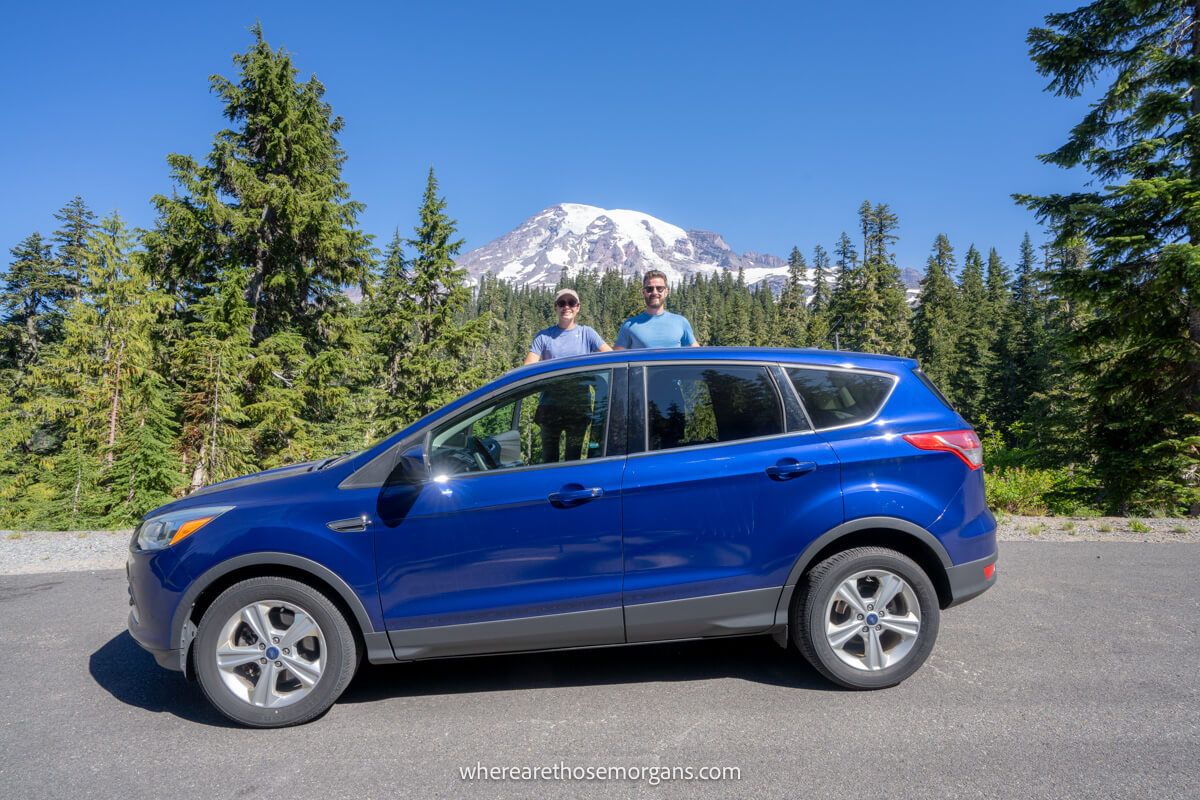
We’ve already stressed the importance of cleaning your vehicle while packing for a road trip. But the other part to the puzzle is keeping your vehicle organized so you know where everything is at all times. You might not want all of the items on this list, but consider taking some of them to transform your home away from home into a cozy oasis.
- Reusable shopping bags
- Packing cubes
- Over the seat organizer
- Protective floor mats
- Laundry bags (garbage bags work too)
- Microfiber towel
- Travel pillow
- UV window shade
- Travel clothesline
- Umbrella
- Solar powered fairy lights
- Small rug for campsite
- Yoga mat
- Citronella candle
- Table cloth
- Spices
- Car air freshener
- Plush blankets and pillows (perfect for the passenger)
Since we typically road trip in our SUV, we have plenty of space inside our vehicle once we put the back seats down. However, if you’re traveling in a smaller car, you might want a roof cargo box to help store gear you won’t need to every day and free up space inside the vehicle. We did try a soft shell cargo bag on top of our car when we moved to New York City, but we didn’t like it because it wasn’t very secure when we stopped for breaks, so opt for the hard shell box that can be locked.
Another item we used a lot but didn’t expect to was our UV window shade. This will help to keep the temperature in your vehicle cooler when it’s parked and you’re out exploring.
Travel Tip: We use a simple garbage bag to keep our clean clothes separate from our dirty ones. This way when we do laundry, we only have to carry the garbage bag into the laundromat and we know exactly what we have to clean.
What To Wear On A Road Trip
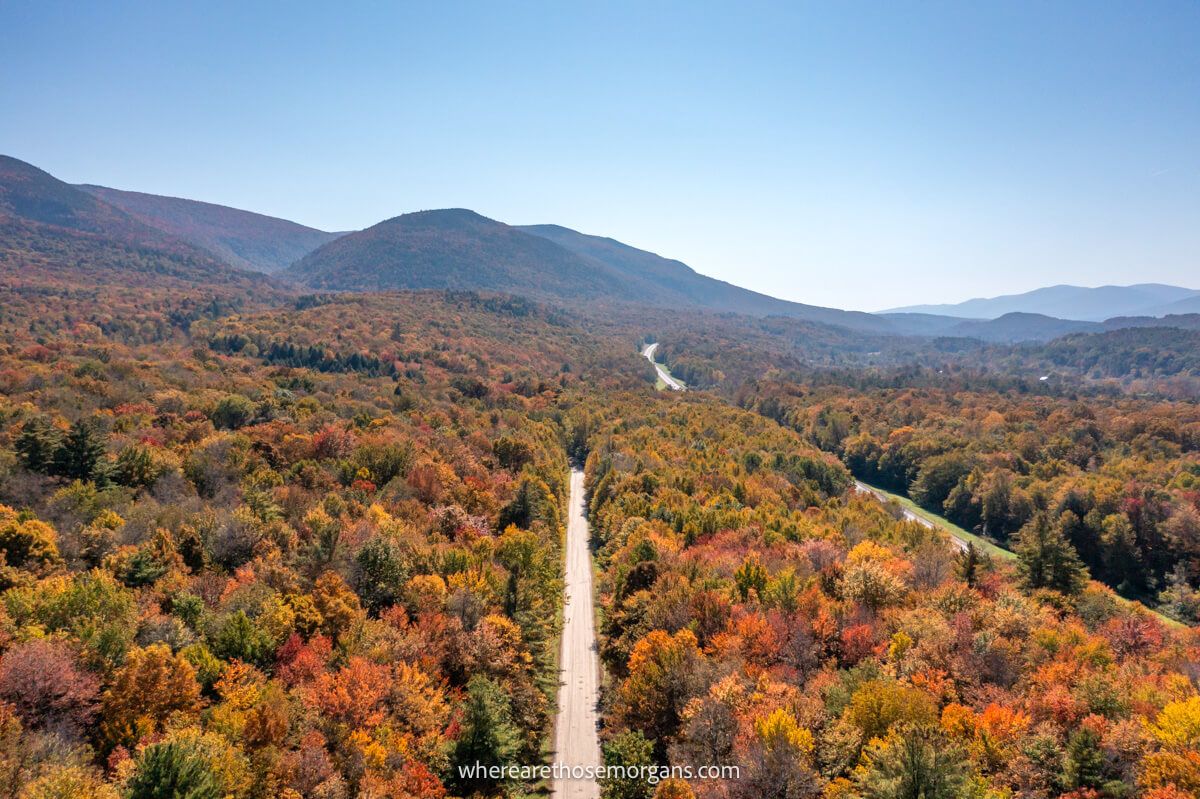
The clothes you bring on a road trip will depend on your style, where you’re planning to travel and the time of year. But the key is to pack minimally with multi-functional items if possible. Below, we include everything we take for a warmer road trip, but if you’re planning a trip during the colder months, make sure you look at the winter essentials later in our guide.
Here are the clothing basics you should consider:
- Tank tops and T-shirts
- Long sleeve tops
- Dressy shirt
- Shorts, pants and leggings
- Dresses and skirts
- Underwear, socks, and bras
- Sleepwear
- Sunglasses
- Buff
- Rain coat
- Windbreaker or lightweight jacket
- Swimsuit
- Sneakers
- Flip flops
- Flats or dressy shoes
- Sun hat or baseball cap
If you plan to do any hiking during your road trip, you should bring moisture wicking clothing and proper footwear. We often layer our hiking clothes with versatile clothes that we can wear around town as well like this Patagonia vest. Anything with antimicrobial, quick-drying and sun protection can be great options.
Here’s what we recommend as a minimum for hikers:
- Upper base layers
- Lower base layers
- Sports bras
- Hiking boots
- Hiking socks (we love Darn Tough)
What you put on your feet during a hike is extremely important. You should be wearing hiking shoes or boots that support both your feet and ankles as well as offer durability. Over the years, Kristen’s come to love Columbia Newton Ridge boots and Mark loves the Adidas Terrex hiking shoe. You can find both brands for each gender. Brush up on the 10 hiking essentials before hitting the trails and shop the best gift ideas for hikers to find something new.
Now that you know what clothes to pack for a road trip, it’s important to think about how you’re going to store all of these clothes. The length of our trip typically determines if we bring a suitcase or backpack. But the size of your vehicle will also be an important consideration. If we’re packing for a short weekend getaway or a week long trip nearby, we’ll pack a suitcase. But if we’re planning to be gone for several weeks or months, we’ll pack backpacks or duffels because they are soft shelled and easier to maneuver.
The Samsonite spinner is a suitcase we’ve traveled with for years both domestically and internationally. Its withstood the test of time and it’s always our go to option. We also enjoy the Level 8 suitcases, but they can be a bit more pricey.
If you want a backpack, look no farther than Osprey because this well known brand sells various travel and hiking backpacks. We backpacked around the world for 18 months with our Ospreys and they are still in great shape. You can read our Osprey Farpoint 40 review here. If you’re a photographer, you also might like to check out the Peak Design Everyday Backpack.
READ: Our ultimate travel packing list
Winter Road Trip Essentials
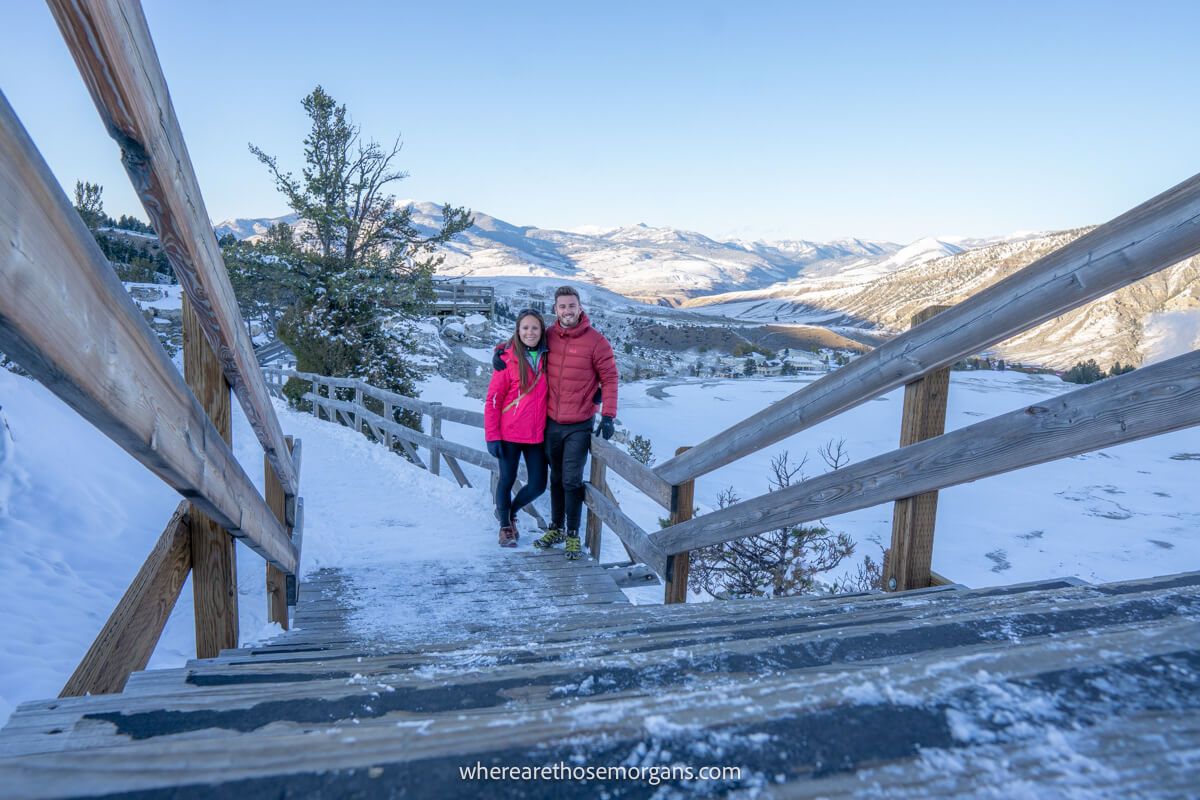
If you’re planning a road trip during the winter months, there are a few cold weather essentials you must bring. This is also important if you’ll be road tripping at higher elevations or areas where snow and ice are possible any time of the year. We had a surprise snowstorm when we visited Yellowstone in October and we were very happy to be prepared for the heavy snowfall.
Here’s what a winter road trip packing list should include:
- Ice scraper
- De-icer windshield fluid
- Snow shovel
- Hand warmers
- Extra warm blankets
- Tire chains and/or snow tires
- Small bag of sand or kitty litter (for traction)
- Extra food
- Long underwear
- Warm coat or jacket
- Snow pants or ski pants
- Warm hat and/or buff
- Gloves or mittens
- Extra pairs of socks
- Snow boots or hiking boots
It’s always smart to prepare for the worst when traveling in colder conditions. Your winter essentials should incorporate items for spending an unplanned night in your car or vehicle.
Personal Items And Toiletries
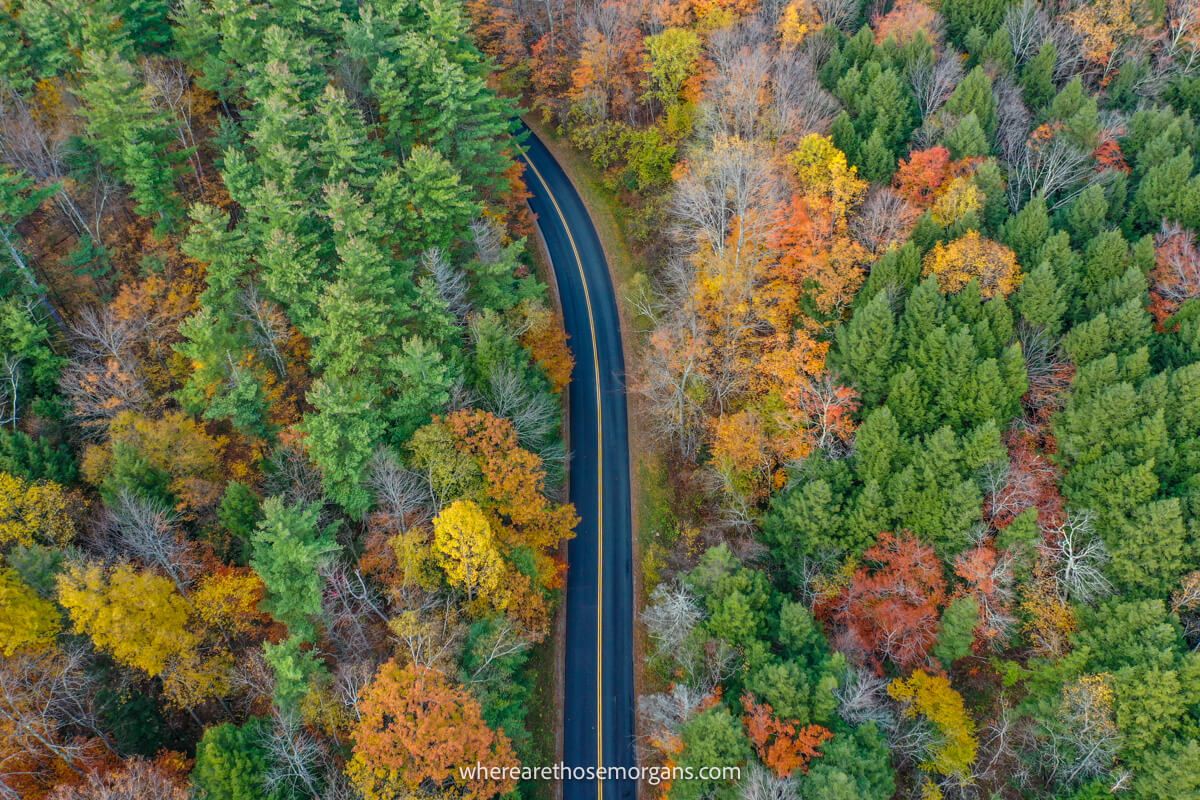
Below we list all the self care items we always include on our road trip checklist so we can stay comfortable for the entire time. Since we always travel together, we only bring one tweezer, dental floss, toothpaste, etc to save on space. This toiletries bag is a good option if you’re camping because it can hang just about anywhere.
- Toothbrush and toothpaste
- Dental floss
- Mouthwash
- Shampoo and conditioner
- Soap or body wash
- Hand and body lotion
- Face wash and moisturizer
- Deodorant or anti-perspirant
- Hairbrush or comb
- Sunscreen and aloe vera
- Lip balm with SPF
- Nail clippers and tweezers
- Wrinkle release spray
- Tide to go pen
- Contacts or glasses (if needed)
Kristen will bring a few feminine essentials too. Sometimes razors and feminine products can be hard to find depending on where you travel so it’s always good to have a few on hand.
- Makeup
- Makeup remover
- Feminine hygiene products
- Hair products
- Razors
- Perfume or body spray
- Hair ties and bobby pins
- Straighter and curler
And Mark will bring essentials for himself in this toiletries bag. It’s big enough to fit his beard and hair trimmer along with everything else he needs.
- Beard balm or oil
- Beard brush
- Shaving kit
- Hair trimmer
- Hair styling clay
- Belts or ties
Road Trip Camping Checklist
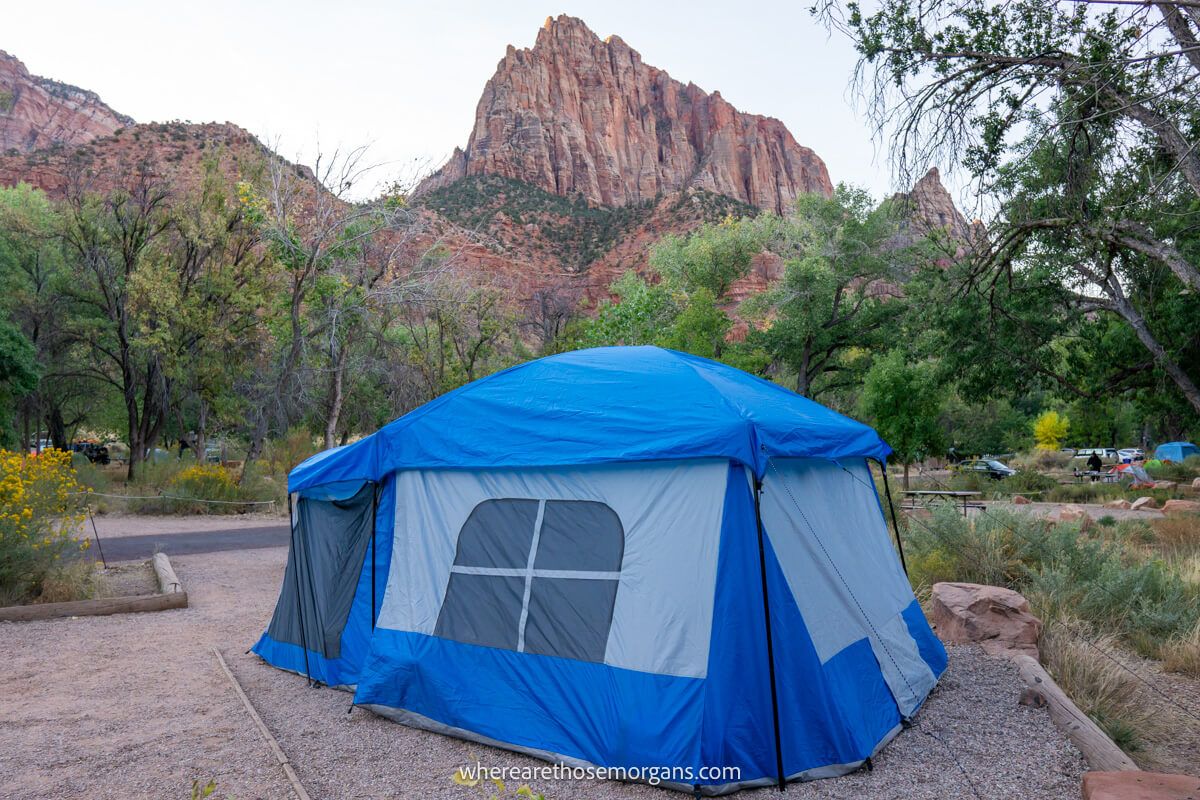
When we road trip through national parks, we typically combine camping with staying in hotels. We love camping because it’s one of the best ways to enjoy the outdoors. But camping takes a lot of preparation and it can be hard work. We love staying in hotels because it’s nice to have a warm shower and comfortable bed after a long day of hiking. But hotels can be expensive and they are often located far from popular trailheads which means more driving.
If you plan to camp at any point during your trip, use our camping checklist below. We’ve fine tuned the items on this list over the years, so it’s been tried and tested multiple times. Pick and choose what you need for your adventure.
Here’s what you’ll want for a campsite:
- Camping tent (small or large depending on your group size)
- Tent seam sealer
- Sleeping bag and pillow
- Headlamp
- Small or large cooler
- Hammock
- Portable camping chair
- Sleeping pad or camping cot
- Lantern
- Camp table
- Swiss army knife
When we stay in campsites, we always try to cook our own food. But the down side to making your own food is that it can be very time consuming and you’ll need to bring more items. If you want to cook food at any point during your trip, use our kitchen checklist to pack items you may need.
- Camp stove and fuel
- Lighters and matches
- Camp cookware or dining set
- Sponge and biodegradable soap
- Coffee press or tea kettle
- Cast iron skillet
- Pots and pans
- Coffee mug or thermos
- Collapsible mixing bowl
- Paring knife and cutting board
- Silicone utensils
- Veggie peeler
- Corkscrew
- Collapsible washing tub
- Microfiber towel (for cleaning only)
- Zippered plastic bags
- Reusable dishes and utensils
Travel Tip: We like to use collapsible products because they can be broken down and stored easily to save space. Kitchen items made from silicone are also very easy to clean.
Snacks To Pack For A Road Trip
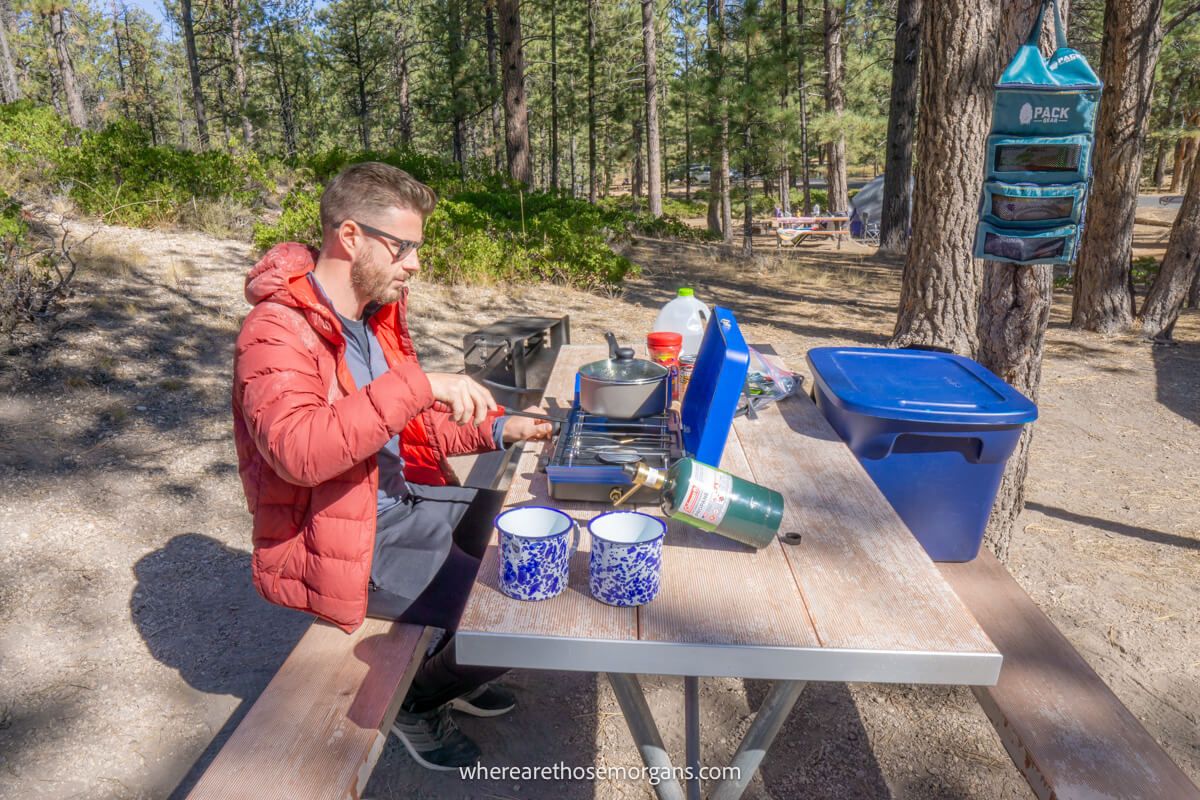
Even if you plan to stay in hotels for you’re entire road trip, it’s a good idea to always have snacks on hand. It’s never fun when someone get hangry, and this way you’ll also be prepared in case you can’t find food right away.
Here are a few snacks to get you started:
- Jerky
- Hummus
- Apples and bananas
- Fresh fruit and veggies (pre-cut before your trip)
- Cereal
- Trail-mix
- Granola, protein or energy bars
- Chocolate bars or candy bars
- Gum and mints
- Pop-tarts
- Chex-mix
- Sunflower seeds
- Hard-boiled eggs
- Canned tuna
- Cheese sticks
- Sliced deli meats (for sandwiches on the go)
- Jam or peanut butter
- Pretzels, popcorn and chips
- Gatorade or sports drinks
One thing we always make sure to have with us is plenty of extra food and water. We fill this gallon jug with water and leave it in our car for emergency purposes. Additionally, we each have a reusable water bottle we fill up every day. We also keep something other than water in our car like Gatorade or hydration powder to help replenish our electrolytes.
Travel Tip: Always pack enough food and water for a few days in case you get stranded somewhere remote.
Electronics And Entertainment
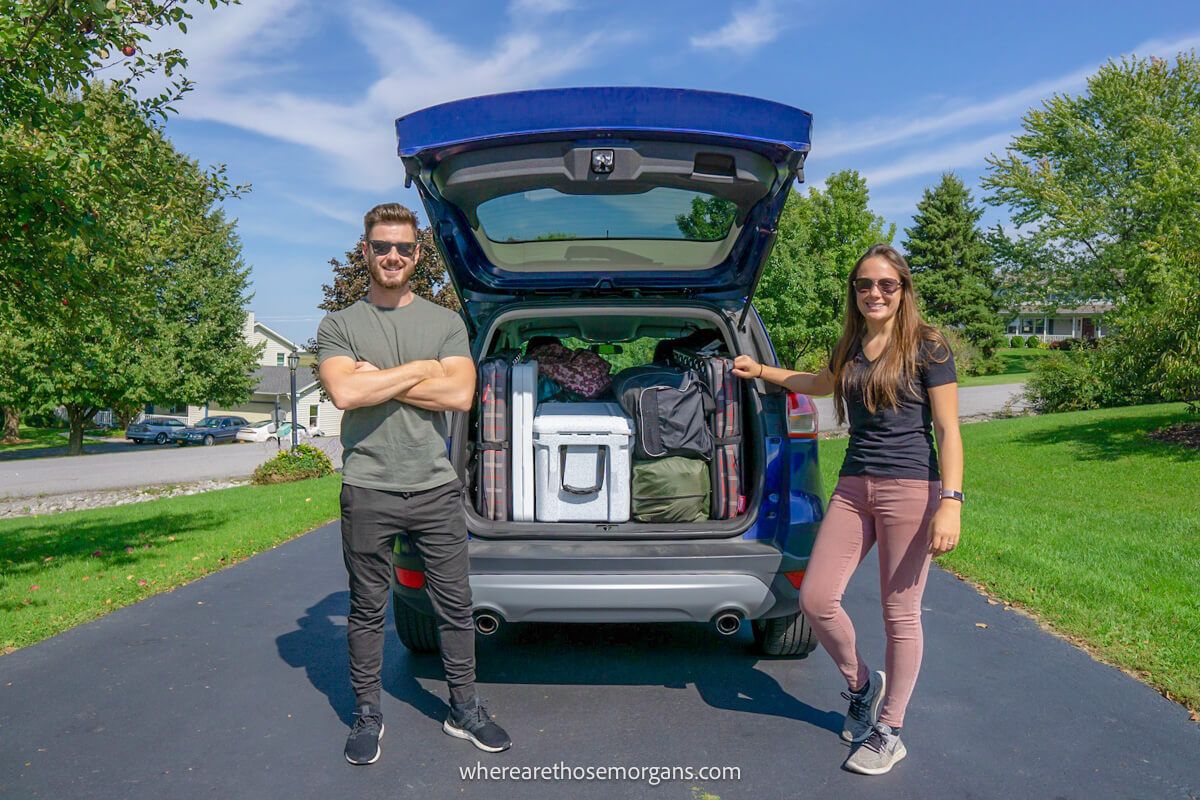
We always carry a lot of electronics because we have an online business and we’re often catching up on work when we settle in for the night. Glance over our list and pack only what you’ll need for your trip.
Here’s a list of the electronics we typically bring on a road trip:
- Portable speaker
- Portable phone charger
- Instant camera
- Portable wifi and VPN
- Fitness watch
- Wireless headphones
- iPad / kindle
- Laptop with chargers
- Cameras and multiple lenses
- Drone
We love this electronics organizer to keep all of our bulky chargers in one place. And this power surge protector is great for plugging in multiple items when we need to do a little work. Another popular item you’ll see on many cars is a dash cam. There are numerous brands and various cameras you can buy so we highly recommend you shop around, but this is a popular option if you can’t decide.
Driving very long sections of the open road is fun for an hour, but then it gets tedious. So when you’re driving those long distances, you’ll need something to keep your mind occupied. Try to find road trip games that include the other passengers so everyone has something to do. Here are a few suggestions:
- Create an epic road trip playlist (we love Spotify)
- Podcasts
- Audio books
- Paperback books (passenger only)
- Road trip games like mad libs and the license plate game
Best Road Trip Apps
Here’s a list of the apps we always use during our road trips:
- Google Maps – A basic navigation app which uses satellite imagery, aerial photography and street maps. It’s often our go to app for directions.
- Waze – This app is a subsidiary of Google that provides real-time driving directions based on live traffic updates. We love it for the construction, traffic and police updates which help us avoid problems.
- Maps.me – Many people swear by maps.me and we have to agree. This app provides offline maps of the whole world so you have a lot of choice.
- Gas buddy – This amazing app not only helps you find the cheapest gas nearby but gives you discounts at select gas stations.
- Booking – We use this app to book hotels on the go. We love the app because its easy to find hotels near our exact location and we can book directly within a matter of minutes. You can also find special mobile price discounts.
- The Dyrt – This is our favorite app to find campsites with or without cell service. With over 1 million campsites in their database, you can read reviews and tips from local campers to help find the best site for you.
- Gaia GPS– If you plan to do a lot of hiking, be sure to download Gaia GPS. This app offers a simplified free version with very accurate downloadable offline maps of hiking trails with the premium version.
- AllTrails – This is another popular hiking app we use the free version to see what recent hikers have said about trail conditions.
If you want to see more apps to help you explore the outdoor, don’t miss our round up of the best outdoor and hiking apps.
Road Trip Tips
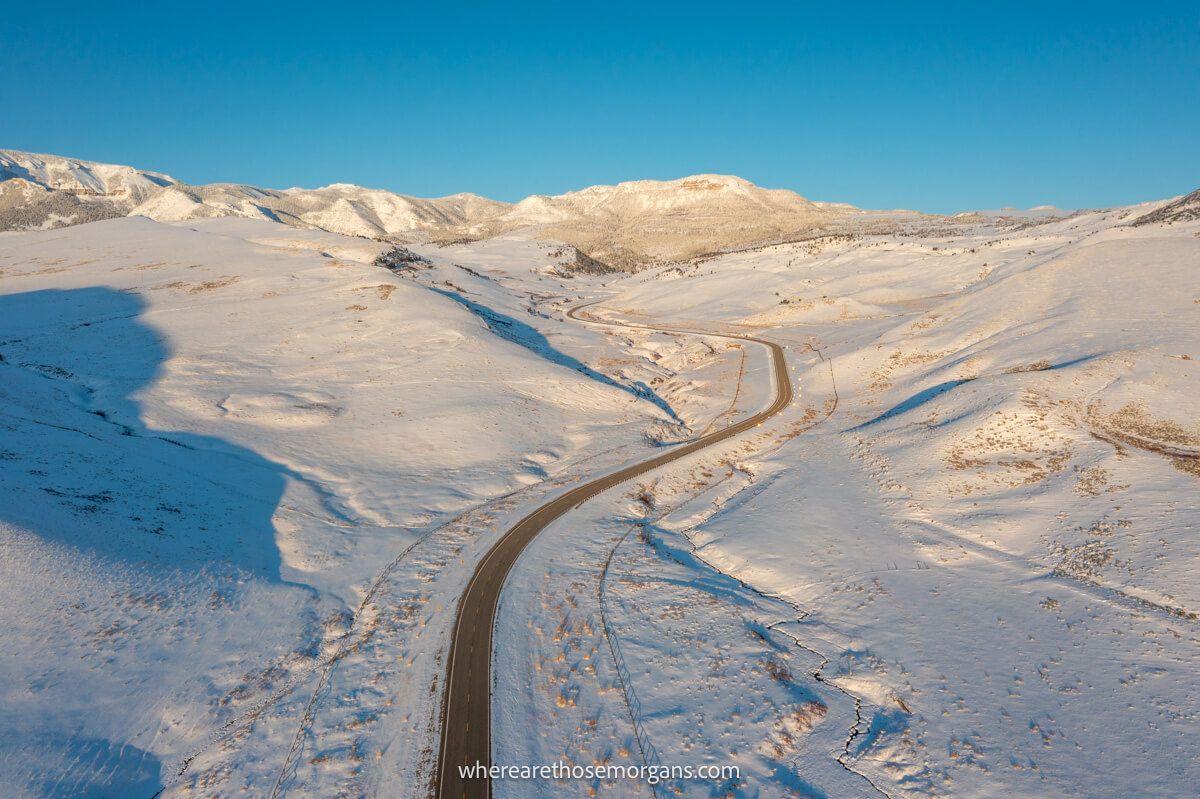
Before you hit the open road, consider these important tips:
- AAA is a good option for roadside assistance if you’re planning a road trip in the United States. We’ve used AAA since our first road trip in 2018 and their basic plan is about $59/year. If you’re traveling abroad, roadside assistance will most likely be covered in your vehicle insurance policy so always verify before a trip.
- Compare rental car prices on various sites before purchasing. We like both Rental Cars and Discover Cars for best value and most options.
- Start packing for a road trip about two weeks from your departure date. But you should start planning for your road trip several months in advance. You may need to take your car in for service or book a rental car so it pays to plan ahead, especially during the busy summer months.
- Less is more when road tripping. If you’re second guessing whether you should bring an item, leave it home.
- Store tissues, toilet paper, hand sanitizer, quarters and your important paperwork in the glovebox for easy access. This way you won’t be trying to dig the essentials out from everywhere during your trip.
- Stay hydrated and eat healthy snacks so you can feel your best. While it’s fun to try new foods, drinking plenty of water and choosing healthier options will give you more stamina throughout your days.
- Download everything to your phone before you leave. You’ll most likely lose service so if you have everything downloaded beforehand, it won’t matter.
- Keep a small cooler or insulated lunch bag filled with perishable snacks. We always do this if we have a long hike or long photography day planned. It’s a good way to avoid those hunger pains.
- Always plan an itinerary before setting off. This way you and your passengers will have a better understanding of where your going and what you’ll see. If you research before hand, you’ll probably avoid that post-trip regret because you won’t drive right past the best hot springs because you didn’t know it was there.
More US Road Trips
- 10 unbelievable road trip ideas in Utah
- How to drive from Salt Lake City to Yellowstone
- 23 stunning stops along the Pacific Coat Highway
- What to see in South Dakota’s Black Hills
- Epic New England fall foliage road trip itinerary
- Driving from Mount Rushmore to Yellowstone
- The perfect Zion to Bryce Canyon road trip
Want more road trip content? Head over to our Road Trip Page to explore the very best of the open road.
We hope our tried and tested road trip packing checklist helps you prepare for your next trip!
Please let us know if you have any questions in the comments below.
Happy Travels,
Mark and Kristen
Enjoy this road trip packing guide? Pin it for later!
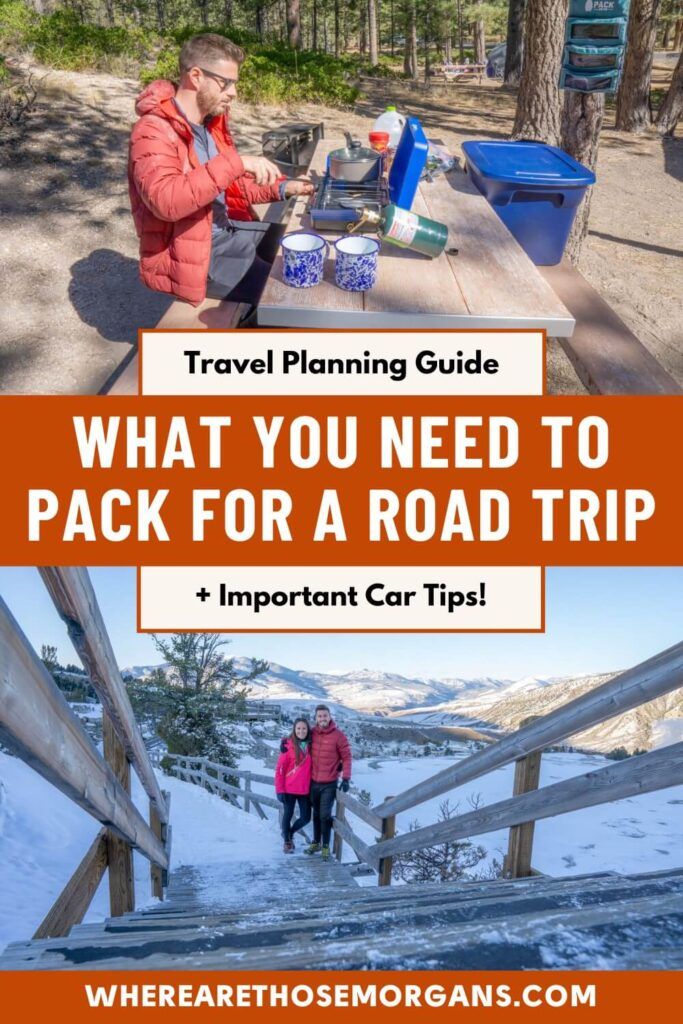
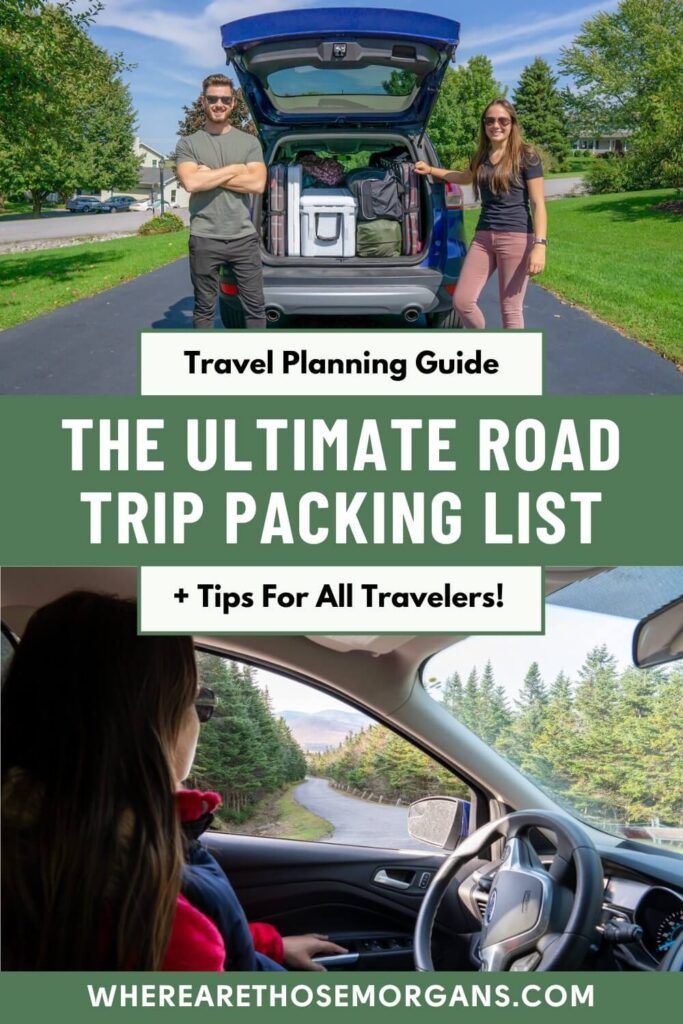
Note: This article contains affiliate links. When you make a purchase using one of these affiliate links, we may earn a small commission at no extra cost to you.
All Rights Reserved © Where Are Those Morgans, LLC. Republishing this article and/or any of its contents (text, photography, maps, graphics, etc.) in whole or in part is strictly prohibited.
Mark and Kristen Morgan are travel, hiking and photography experts. Over the last 6 years traveling full time, they have explored more than 40 countries and 30 US states.
Where Are Those Morgans has been featured in USA Today, Gestalten, Get Your Guide, CityPASS and Condé Nast Traveler along with various other publications. Read more about us.

